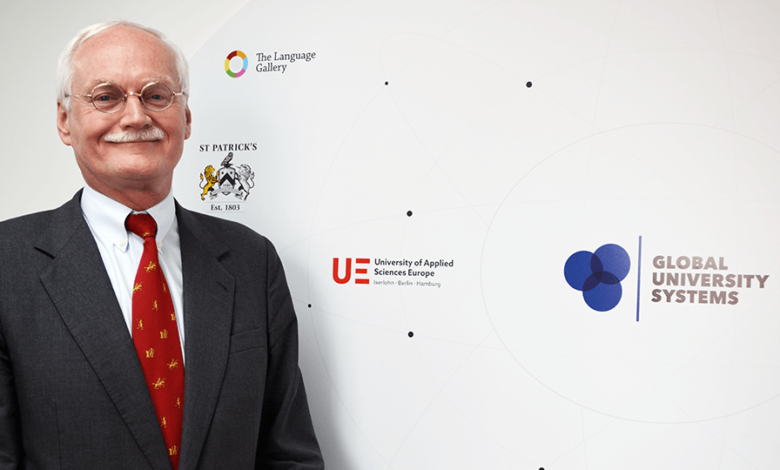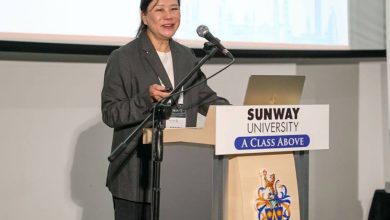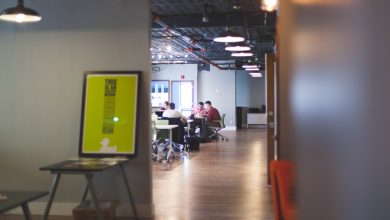The Covid-19 crisis: A catalyst in the slow-motion revolution of education

Modern education is evolving. Mere on-campus or pure online-classes are likely to be marginalised. The future will be dominated by the middle ground: With Integrated Virtual Learning (IVL) as a prominent feature.
Prof. Dr. Maurits van Rooijen, Chief Academic Officer of Global University Systems and Rector at the University of Applied Sciences Europe in Iserlohn, Berlin and Hamburg, gives insights into how the world of education is evolving.
“Historically, the preferred form of education has been sitting down with a small group of students, discussing topics of great interest and debating highly complicated questions. Additionally, there is the lecture, or what the Germans call the ‘Vorlesung’ (literally meaning “the reading”), with large numbers of students – sometimes hundreds – diligently taking notes.
Contrary to what is often being said, the debate about online education versus conventional on-Campus education is not a binary one. The reality of modern education should be seen as a spectrum, with the extremes of 100% on-Campus or online likely to be marginalised. The future is, in my opinion, likely to be dominated by the middle ground with what I will call Integrated Virtual Learning (IVL) as a prominent feature.
IVL: Integrated Virtual Learning
What is happening now with the introduction of online tools for education and the Covid-19 crisis is real time virtual learning. It is conventional teaching via Zoom or Teams.
The idea that a programme is taught either online or on campus is outdated. It is more sensible to look at it as a spectrum that goes from conventional face-to-face teaching through to fully online. Covering a large part of the spectrum will give students choice to learn in a manner that best suits them and circumstances. Moreover, in the middle of that spectrum is what I call Integrated Virtual Learning. This is going to be the ‘new normal’ in education. For this trend, the Covid-19 induced crisis will have acted as a catalyst.
Rather than replacing conventional teaching with virtual learning – which would mean missing all the positive sides of on-campus education – or to discharge the positive elements of virtual learning when campuses reopen, we shall pursue a merger of the two modes: Integrated Virtual Learning or IVL.
The goal of IVL is to ensure a seamless connection between the on-campus and off-campus learning in real time. IVL enables some students following the same lecture or tutorial to be on campus, whilst some students can take part virtually.
The advantages of IVL are obvious in the current situation. Campuses and classrooms are unlikely to reopen to full capacity, which means that students can alternate between on and off campus modes.
IVL should not be confused with so called blended learning. Though ‘blended’ and also ‘hybrid’ are probably the closest forms of teaching to IVL, there is a distinct difference. Blended means that some parts of the learning is online, some parts face-to-face, on campus. Integrated Virtual Learning, as the term Integrated suggests, means that learning is delivered simultaneously on-campus and virtual, in real time. Even the students who are on campus participate virtually in the learning process.
Post-COVID-19, IVL will remain of value. It gives students greater flexibility and enriches the learning experience. There is only one thing students want: choice. Each individual has own needs and preferences. The aim should be to be less prescriptive in delivery mode and create the opportunity for students to pick what works best for him or her. The question is not only where colleges position themselves, but also how broad their presence is on that spectrum: as the broader the scope, the more choice students have.
The challenges
Courses that require a lot of time in labs or studios obviously struggle with virtual learning tools. But if we approach learning from a spectrum perspective, the question is less about replacing and more about reducing the amount of time one needs to spend in labs and studios.
Another challenge is study abroad. Besides giving affordable access to many more, if virtual mobility is integrated into earlier stages of higher learning, it will actually whet the appetite of students to take advantage of physical mobility at a later stage.
The same applies to internships. Virtual work experience does not necessarily replace a period in a company or doing volunteer work, but it can make the opportunity of experiential learning more widely available and prepare students better for the ‘real’ thing of a placement. In other words, these learning tools are not necessarily a substitute, on the contrary they can be complementary and improve the learning experience and possibly enhance time efficiency.
Conclusion
What the COVID-19 crisis can do is become a catalyst: speeding up these developments, to the advantage of our students. But for that to happen we do have to be willing to take a slightly different look at higher education: with a less binary approach to teaching modes, a modernised understanding of the role of professors and last but not least approaching learning much more from a student perspective.”
To achieve the needed transformation, we need to address some fundamental challenges. We need to ‘unbox’ our thinking. We need to become forward looking rather than being defensive, welcoming enrichment rather than perceiving it as a threat. And most importantly, we should shift our focus from supply (the course, the programme, the curriculum) to the user (adjusting to personal needs, enhancing choice, enabling to respond to changing circumstances).
In many ways, nothing new as such, except the need to change quite radically our thinking about education at ALL levels: seeing the way we teach no longer as a binary ‘classroom versus online’ position but rather as covering a spectrum of modes, offerings students an enriched choice and embracing IVL as the mode of education being at the heart of modern learning.
Story by Prof. Dr. Maurits van Rooijen




